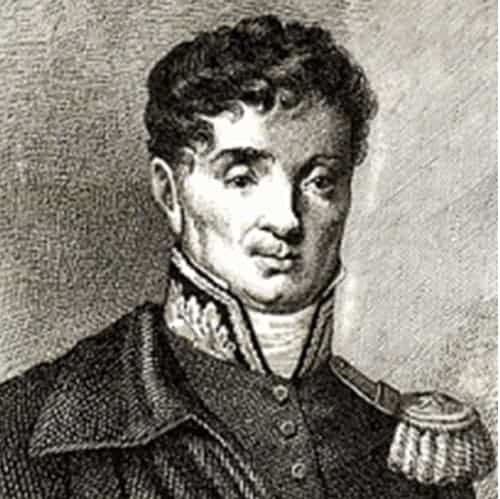
Armand-Marc-Jacques Chastanet, Marquis de Puységur (1751–1825), belonged to one of the most ancient and wealthiest aristocratic families in France. Across the centuries, his ancestors held many prominent roles, especially in the military field. Following their example, he was colonel in the artillery regiment of Strasbourg. As the eldest son, he inherited a large estate at Buzancy near Soissons. De Puységurs were also known for their philanthropic activities. De Puységur’s youngest brother, Viscount Jacques Maxime, was a student of Anton Mesmer, the founder of “animal magnetism,” the first semi-scientific effective treatment method of hysteria. The second brother, Antoine-Hyacinthe, was also a dedicated student of Mesmer. As a naval officer, he introduced animal magnetism into the French colony of Saint-Domingue.
De Puységurs encounter with the “animal magnetism”
His brothers Viscount and Antoine-Hyacinthe had persuaded Armand-Marc-Jacques to join the newly formed “Society of Universal Harmony” founded by Franz Anton Mesmer. In 1784, he attended Mesmer’s seminar in Paris, where he learnt about the “animal magnetism” presented by its inventor. Puységur learnt the technique that later has been described as hypnosis.

In the XVII century, the term hypnosis was not used. Anton Mesmer has described the phenomenon of hypnosis as “animal magnetism.” He borrowed the term “magnetism” from physics and the contemporaneous discovery of magnetism. To make the text understandable, we must translate the old-fashioned terms such as “magnetism” and “magnetising” into current terminology: “hypnosis” and “hypnotising”.
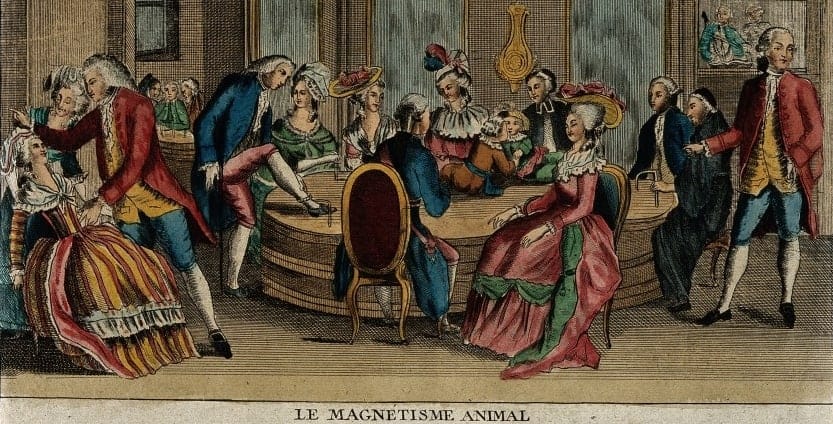
The Enlightenment
The Enlightenment era relates to the period from the middle of the 17th century until the end of the 18th century. In this period, science was shaken by the revolutionary ideas of Isaac Newton, who laid the foundation for classical mechanics, explaining the laws of gravity, motion, and the discovery of magnetic and electric phenomena.
With Francoise Antoine de Lavoisier began the era of modern chemistry. Lavoisier was the first who explored and explained the proper nature of combustion. He also discovered oxygen and hydrogen, overturned the phlogiston theory, wrote the first list of elements, and reformed chemical nomenclature.
During this same intellectual awakening, Puységur emerged as a key figure in the development of mesmerism, which laid the groundwork for what would later influence German Magnetism Therapy in Dubai and beyond.
On the philosophical field in England, Francis Bacon, the “father of empiricism,” advocates the scientific method of inquiry and investigation of scientific phenomena.
In France, René Descartes revolutionaries the scientific approach, doubting previously paradigms and trying to prove their validity through evidence-based investigation, while Voltaire criticised social convention and promoted radical republican ideas.
The members of the French aristocracy created their own laboratories on their estates and experimented with chemistry, physics, astronomy, and other branches of science.
Armand-Marc-Jacques Chastanet, Marquis de Puységur, and his brothers belonged to this brilliantly educated part of the French aristocracy. As did many of his aristocratic contemporaries’ fellow aristocrats, he kept on his estate at Buzancy a “cabinet de physique,” where he experimented with electricity.
De Puységur, pioneer of hypnosis and depth psychotherapy
Having returned to his estate, on one day in May Puységur entered the house of Victor Race, who was a shepherd on his estate, who was suffering from congestion in his lungs and a fever. Victor Race was at that time twenty-three years old. His family served Puysegurs for several generations. Puységur began to “magnetise” (hypnotize) the man. This involved making passes or sweeping movements of the hands over the body of the person.
To de Puységur’s surprise, the effect of magnetic sessions he had with the young man showed a different effect compared to Mesmer’s “violent crisis,” which he observed in Mesmer’s presentations in Paris. While in the “violent crisis,” the “magnetised” (“hypnotised”) patients experienced a state of intense agitation; Victor fell asleep peacefully a few minutes later. Puységur, however, realised that Victor had fallen into an abnormal state of consciousness instead of falling into a normal sleep. He was awake in his sleep, speaking aloud, answering questions, and displaying a much brighter mind than in his normal state.
Writing about this experience a few days later, Puységur said:
“He spoke, occupying himself out loud with his affairs. When I realized that his ideas might affect him disagreeably, I stopped them and tried to inspire more pleasant ones, imagining himself shooting a prize, dancing at a party, etc.… I nourish these ideas in him and in this way I made him move around a lot in his chair, as if dancing to a tune; while mentally singing it, I made him repeat it out loud. In this way I caused the sick man that day to sweat profusely. After an hour of crisis, I calmed him and left the room. He was given something to drink, and having had bread and boullion brought to him, I made him eat some soup that very same evening, something he had not been able to do for five days. He slept all that night through. The next day, no longer remembering my visit of the evening before, he told me how much better he felt.”
Memoirs pour servir à l’histoire et à l’établissement du magnétisme animal (1784), pp. 28-29.
Further work with Viktor
Intrigued, Puysegur magnetised Victor again and was able to create a similar state magnetising other subjects. It immediately occurred to Puységur that a primary characteristic of subsistence in this in-between subconscious state was the devitalization of conscious willpower. To distinguish this trance-like state from Mesmer’s “violent crisis,” he called it a “perfect crisis”; later, he used such terms as “mesmeric somnambulism,” “artificial somnambulism,” or “magnetic sleep.” Only much later, James Braid gave this condition its present name: “hypnosis.”
Another characteristic of the magnetic sleep was suggestibility and “intimate rapport” (as Puységur called it), which means a special connection between magnetiser and magnetised. The hypnotic amnesia (as we call it today) was almost universal for magnetic somnambulism at the time.
Puységur observed other features of the somnambulic sleep and called it “divided consciousness.” In the hypnotised state, Victor showed a deeper and brighter mind than in his conscious state. While hypnotised, he spoke about himself, the “normal Victor” (his conscious personality), in a third person.
Hypnotic state and Puységur’s concept of “alternate personality”
This aspect of Victor’s alternate personality manifestation astonished Puységur. Not only that, but Victor was also different in the state of magnetic sleep. He showed two different, independent personalities. Puységur described his observations in the following words:
“When [Victor] is in the magnetized state, he is no longer a naïve peasant who can barely speak a sentence. He is someone whom I do not know how to name (1784, p.35).” Puységur, the educated aristocrat, even found himself turning to this strangely inspired somnambulistic peasant for advice about how to apply animal magnetism: “He is teaching me the conduct I must follow. According to him, it is not necessary that I touch everyone. One look, one gesture, one feeling of good will is enough. And it is a peasant, the narrowest and most limited in this locality, that teaches me this. When he is in crisis, I know no one as profound, prudent, or clear-cited (1784, pp. 32-3).”
Memoirs pour servir à l’histoire et à l’établissement du magnétisme animal (1784)
De Puységur observed that once his subjects reached the state of “perfect crisis,” they were able to diagnose their own diseases, foresee their course of evolution, and even tell which treatment they needed. Puységur called such abilities the “presensation.”
Describing the experience in his memoirs, Puységur said, “The boundaries (of the personality during artificial somnambulism) are so complete that these two states can almost be described as two distinct beings.” He further argued that “in the magnetic state, the patient has a clear memory of all actions done in the conscious state, but he doesn’t remember anything that was done in the magnetic state.”
Puységur hypothesised that somnambulism revives the otherwise disenfranchised peripherals of consciousness (in today’s terms: the unconscious contents), endowing them with direct, temporary access to the external world (in today’s terms: making them temporarily conscious). These unprecedented trends indicated an infiltration of the normally unconscious, deeper aspects of the mind. His groundbreaking contributions form a foundational part of the history of hypnosis, offering one of the earliest glimpses into the layered nature of consciousness.
Puységur published these insights in 1781, around a year after his investigations of the Victor Race.
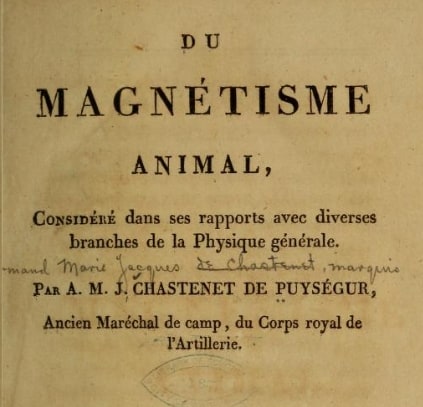
Healing wit “group magnetism” (group hypnosis)
The number of Puységur’s patients soon became very large, and he began to magnetise several at once. Following Mesmer’s ideas, he magnetised trees. In his castle park there was a fountain, and next to it a large elm tree. Peasants sat on stone benches around it. A rope was attached to the main branches of the tree, and the farmers wrapped the end of the rope around the diseased part of their body. The farmers/patients formed chains holding each other’s thumbs.
Puységur later asked the participants to break the chain and to rub their hands. He picked some of them and touched them with a baguette (an iron bar), inducing a “perfect crisis.” These farmers now became “doctors” and began diagnosing and prescribing treatments for their fellow patients. To wake them from their magnetic sleep, Puységur ordered them to kiss the trees. After waking up, they couldn’t remember what happened. In just over a month, 62 out of 300 patients reportedly recovered from various ailments.

Puységur’s new definition of “animal magnetism”
Puységur’s discovery of magnetic sleep and its psychological origin contradicted Mesmer’s concept. Messmer assumed that the connection between the healer and its object was of a physical nature similar to the invisible forces of gravity or magnetism; later he borrowed the name “animal magnetism.”
Victor Race appeared to have an alternate personality within him, which emerged when he was in magnetic sleep. Puységur’s discovery of magnetic sleep and the alternate personality state introduced a radically new view on the human psyche. The importance of this discovery cannot be overestimated. Magnetic sleep revealed that the psyche is divided and that there exists a deeper level of insight quite different from everyday consciousness.
This second level displays personality characteristics unlike those of the conscious state in judgements and mental acuity. The second “unconscious psyche” possesses its own memory chain, with continuity of memory and identity from one episode of magnetic sleep to the next. However, the unconscious layer is separated from the person’s ordinary consciousness by the memory barrier. The two levels of the human psyche are sharply distinguished as though they were, as Puységur put it, “two different existences.” The “second consciousness” described by Puységur has been described one century later by Freud as the “unconscious.”
Puységur’s revolutionary treatment concept
discovery was absolutely unique in his time, anticipating by one hundred years the future development of psychodynamic psychotherapy. The treatment of Victor Race was the first ever psychotherapy carried out in the modern way. His notion of the therapeutic bond between the psychotherapist and the patient corresponds to Freud’s psychoanalytical theory and the phenomenon of transference. The conduct of Puységur’s therapy refers to Freud’s psychoanalysis, Jung’s psychoanalytical psychology, and modern hypnotherapy.
Puységur versus Charcot, an ethical dispute
In early 1785, Puységur took Victor to Paris, where he used him for demonstrations. After this demonstration, Victor’s condition deteriorated. Later, during the “magnetic sleep,” Victor explained that the deterioration of his condition was the effect of him being exposed to a curious audience.
Puységur thus learnt that magnetism should be used only for therapeutic purposes and not for experimentation and demonstrations. This insight was later neglected by Martin Charcot, the French pioneer of hypnosis. Charcot used to demonstrate his patient in a hypnotic state to students but also to an interested audience.
“Believe and Want” a modern approach towards hypnotism
In August 1785, Puységur received orders to take command of an artillery regiment stationed at Strasbourg. The local Freemasonry Society had asked him to teach its members the principles of “animal magnetism.” Puységur delivered a course for the society. He stressed out the importance of “power” (in today’s terms: the willpower of the therapist) in the process of inducing the hypnosis or using Payseur’s vocabulary to “magnetise” the patient. It was a radically different idea compared to Mesmer’s hypothesis. Mesmer assumed that humans send “magnetic waves” similar to those of gravity or magnetic waves. Puységur recognised that the process of hypnosis (magnetism) is based on the psychological interaction between the therapist and the patient. He concluded his statement with the following words:
“I believe in the existence within myself of a power. From this belief derives my will to exert it. The entire doctrine of Animal Magnetism is contained in the two words: Believe and Want. I believe that I have the power to set into action the vital principle of my fellowmen; I want to make use of it; this is all my science and all my means. Believe and want, Sirs, and you will do as much as I.”
Citation from De Puységur speech from August 1785
The evidence-based treatment
In Strasbourg, Puysegur organised the “Societe Harmonique des Amis Reunis,” whose aim was to train magnetisers and to setup centres for magnetic treatment. By 1789, it counted more than two hundred members, including the elite of the Alsatian aristocracy. The treatment was offered gratuitously, and the members were obliged to write accurate reports of all their experiences and to submit them to society. Under its supervision, a number of treatment centres were setup throughout Alsace. The Strasbourg society published annual reports listing the cures with short case histories, including the names of the practitioner and the patient and the nature of the illness. This was the first evidence-based approach used in in-depth psychology. At that time, the collective treatments had been abandoned.
Marquis de Puységur and the French revolution
It’s a matter of speculation how the movement would have developed had it not been violently interrupted by the Revolution of 1789. During the French Revolution of 1789, the “Societe de I’ Harmonie” was disbanded. Many of Mesmer’s aristocratic disciples emigrated. Others perished on the scaffold, among them the brightest minds of French aristocracy, for example, Lavoisier. Being fascinated by the revolutionary ideas of “liberté, égalité, fraternité,” Marquis de Puységur commanded the republican forces as a general. After one year, witnessing the terror of the Robespierre regime, he resigned and subsequently spent two years in prison. Later he was discharged and returned to his castle at Buzancy. He continued writing literary works and took up once again his research on magnetism.
After Napoleon came to power, Puységur continued writing literary works and took up once again his research on magnetism. He became the leading figure for the new generation of practitioners of mesmerism interested in inducing the sleeping trance instead of the original method of Mesmer.
Death of Victor Race
In April 1818, the sixty-seven-year-old Marquis learnt that Victor Race, who was now fifty-eight, was severely ill. Victor was continually talking about him. Puysegur went to see Victor and magnetised him in the same cottage in which he had done it for the first time thirty-four years earlier. He was struck that in his magnetic sleep Victor remembered every detail of his previous somnambulic session. Victor’s health improved, and the Marquis returned to Paris. Shortly thereafter, Victor died and was buried in the cemetery at Buzancy. The Marquis ordered an inscription to be put on his tombstone.
In April 1818, the 67-year-old Marquis learnt that Victor Race, now 58, was seriously ill and was repetitively talking about him. Puységur visited Victor and magnetised him in the same hut he had first done 34 years ago. He was struck by the fact that in his magnetic sleep Victor remembered all the details of his former sessions. After Puységur’s visit, Victor’s health improved. Shortly thereafter, Victor died and was buried in the Besancy Cemetery. The Marquis had placed an inscription on his tombstone.
Death and legacy of Marqius De Puységur
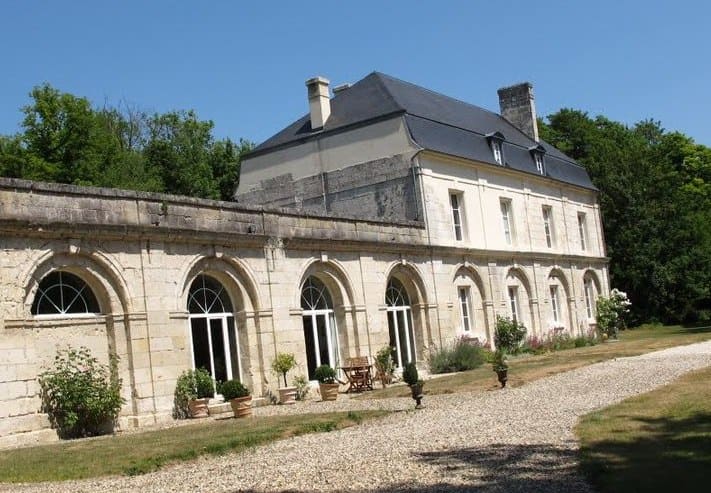
In 1825, seven years after Victor’s death, Marquis de Puységur became severely ill and was transported to his castle at Buzancy. He died there at the age of seventy-four, leaving the reputation of a thoroughly honest and generous man.
Puységur was in every inch an extraordinary man. Despite his great achievements, he never took credit for having invented the procedure of hypnotic induction, portraying himself as a disciple of Anton Mesmer. Over the years, his name gradually fell into oblivion; his writings became scarce.
The small village of Buzancy fell for centuries again in sleep to be violently awoken by the Great War. In July 1918, the village witnessed a violent battle between German Imperial and Allied forces. The soldiers of the 1st US Infantry Division were not able to break through the German lines. On the 28th of July 1918, the 15th Scottish Division launched an attack accompanied by a French heavy artillery and flamethrower section up the slope of the chateau and the village itself. As a consequence, the chateau was nearly completely destroyed.
Henri’s Ellenberger final quote

Henri Ellenberger, the author of the monumental work about the development of dynamic psychiatry “The Discovery of the Unconscious,” visited Buzancy in the late 1960s. He wrote:
“Today Buzancy a charming little village amidst forests and fertile fields and meadows, fell asleep again. The castle of the old and powerful Puysegur family has almost entirely disappeared.
The centuries-old elm tree survived until 1940, when a storm uprooted it. Some farmers took pieces of its bark, ascribing to them certain prophylactic or curative properties. The spring still exists, and its water is believed to have healing power.
The tomb of Victor Race in the small village cemetery has disappeared, and no one, even his descendants, remembers him anymore. The peaceful little church contains the graves of several of the Puysegurs, including that of Amand-Marie-Jacques de Chastenet, Marquis de Puysegur, one of the great forgotten pioneers of hypnotism and the psychological sciences.” Learn more or join the discussion on our Facebook page.
Henri Ellenberger from “The Discovery of the Unconscious”
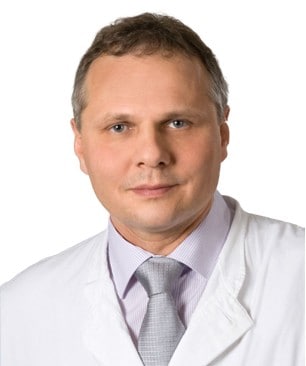
DR. GREGOR KOWAL
Senior Consultant in Psychiatry,
Psychotherapy And Family Medicine
(German Board)
Call +971 4 457 4240


